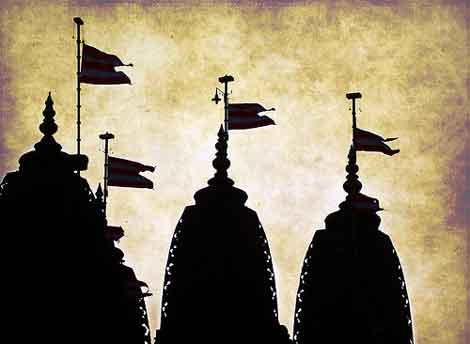 INDIA, November 18, 2017 (EPW by O.B. Roopesh): The appointment of Dalit priests to temples in Kerala has been engendered by the growing departure of Brahmin youth from priestly jobs, coupled with existing aspirations of the lower castes to become priests in Brahminical temples. This move is aimed at the formation of a cohesive “Hindu community” through the reconfiguration of caste practices, not the eradication of caste. On 9 October 2017, the Travancore Devaswom Board (TDB) in Kerala decided to appoint 36 non-Brahmin priests, including six Dalits (from different Dalit castes), to the Brahminical temples of Travancore (Hindu 2017). The majority among the 36 priests are Ezhavas (belonging to the Other Backward Classes [OBCs] group). The TDB has decided to introduce a reservation policy in the recruitment of temple priests, a decision that has garnered attention across India for its “radical” nature. It is being celebrated as a revolutionary decision taken by the Kerala government and an indication of the progressive nature of Malayali society.
INDIA, November 18, 2017 (EPW by O.B. Roopesh): The appointment of Dalit priests to temples in Kerala has been engendered by the growing departure of Brahmin youth from priestly jobs, coupled with existing aspirations of the lower castes to become priests in Brahminical temples. This move is aimed at the formation of a cohesive “Hindu community” through the reconfiguration of caste practices, not the eradication of caste. On 9 October 2017, the Travancore Devaswom Board (TDB) in Kerala decided to appoint 36 non-Brahmin priests, including six Dalits (from different Dalit castes), to the Brahminical temples of Travancore (Hindu 2017). The majority among the 36 priests are Ezhavas (belonging to the Other Backward Classes [OBCs] group). The TDB has decided to introduce a reservation policy in the recruitment of temple priests, a decision that has garnered attention across India for its “radical” nature. It is being celebrated as a revolutionary decision taken by the Kerala government and an indication of the progressive nature of Malayali society.
Caste is constantly being reconfigured in relation to the social conditions of Kerala. It increasingly makes visible the limitations of old categories. This is evident not only in the ascent of lower castes to spaces dominated by the upper castes, but also the changing caste practices of the upper castes. Thus, this is a reconfiguration, even contestation, of caste practices, but surely not the annihilation or eradication of caste. The formation of a cohesive “Hindu community” is a vital objective being pursued through such a reconfiguration of caste, not the annihilation of the system. This process began in the early decades of the 20th century and continues to date. Temples have become the centre of such discourses and a constitutive process of becoming Hindu in contemporary Kerala.





